Discover top Fourth of July pet safety tips! Keep your furry friends calm and secure during fireworks with our expert advice.
Understanding Pet Anxiety on the 4th of July
The 4th of July is a day of celebration, marked with vibrant fireworks, festive gatherings, and patriotic displays. While humans revel in the excitement and joy of Independence Day, it’s important not to forget about the well-being and safety of our beloved furry friends. The loud noises, bright lights, and crowded environments associated with this holiday can cause significant stress and anxiety for our pets. To ensure their safety and provide a calm and secure environment, it is crucial to be prepared and take proactive measures.
“Animal control officials across the country report a 30-60% increase in lost pets each year between July 4th and 6th.”
The Impact of Fireworks on Pets
Did you know that the 4th of July is the busiest day of the year for animal shelters? Dogs (and even cats) often run away from home, trying to escape the scary “boom” from the fireworks. According to the American Humane Association, approximately 10 million pets are lost each year, and one in three pets will become lost at some point during their life. Additionally, pets might display anxiety-induced behaviors such as barking, digging, chewing, or clawing uncontrollably.
American Veterinary Medical Association (AVMA):
“Nearly 1 in 5 pets go missing after being scared by fireworks.”
Some shelters say their busiest day of the year is July 5th because more dogs are lost July 4th than any other day of the year (Wide Open Pets).
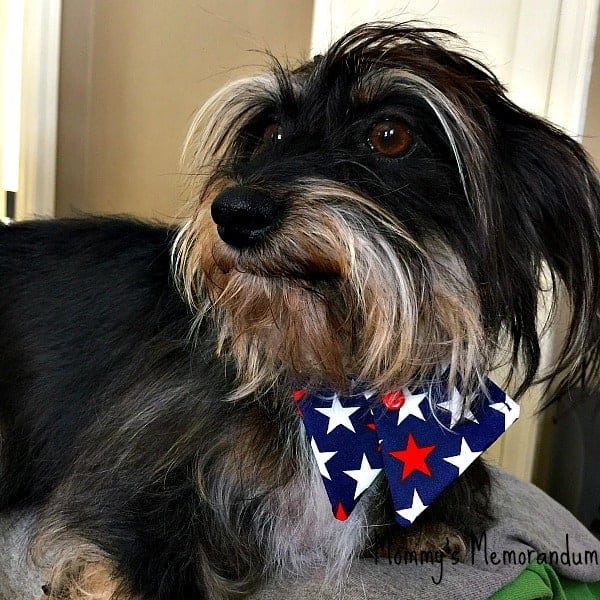
5 Fourth of July Pet Safety
Make sure your pet has up-to-date identification in case they run away when scared by noisy fireworks. A Pet ID can help your pet be returned to you safely. Including pet ID as a safety tip on the 4th of July is crucial because it can significantly increase the chances of reuniting with your pet. Consider microchipping your pet as an additional form of identification. Microchips contain a unique identification number that can be scanned by shelters or veterinarians to obtain your contact information.
Dr. Karen Becker, Veterinarian:
“Pets are much more sensitive to loud noises, flashing lights, and strong smells. It’s important to remember that what we consider fun can be extremely frightening for them.”
2. Avoid Fireworks
Don’t take your pet to events that involve fireworks. Your pet is better off being left home if you are going to partake in firework festivities. The loud noises and bright flashes can be extremely distressing for animals, causing them to panic and attempt to escape. Keeping your pets indoors in a secure and quiet area, away from the sights and sounds of fireworks, can help minimize their anxiety.
American Kennel Club (AKC):
“The loud sounds of fireworks can trigger a dog’s fight-or-flight response, causing them to flee from a perceived danger.”
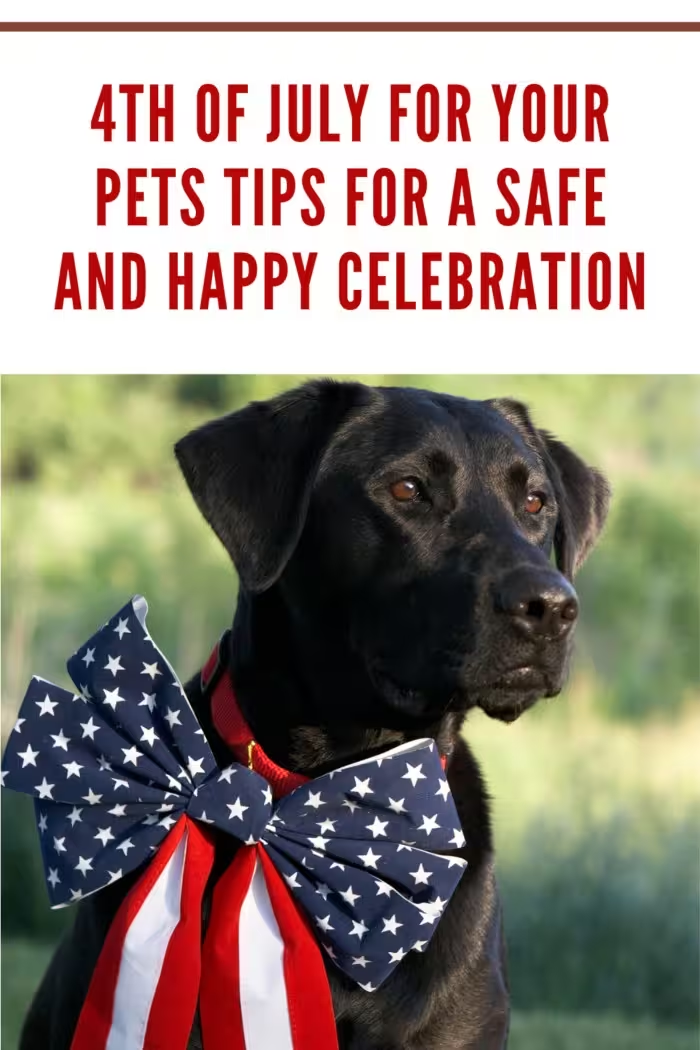
3. Crate Your Dog
Crating your dog is an important safety tip for the 4th of July to provide a secure and comforting space for your pet during the holiday festivities. Fireworks, loud celebrations, and crowded environments can create a lot of stress and anxiety for dogs. The enclosed space of the crate creates a den-like atmosphere, which can have a calming effect on dogs during times of stress. Ensure the crate is comfortable by adding their favorite bedding, toys, and treats.
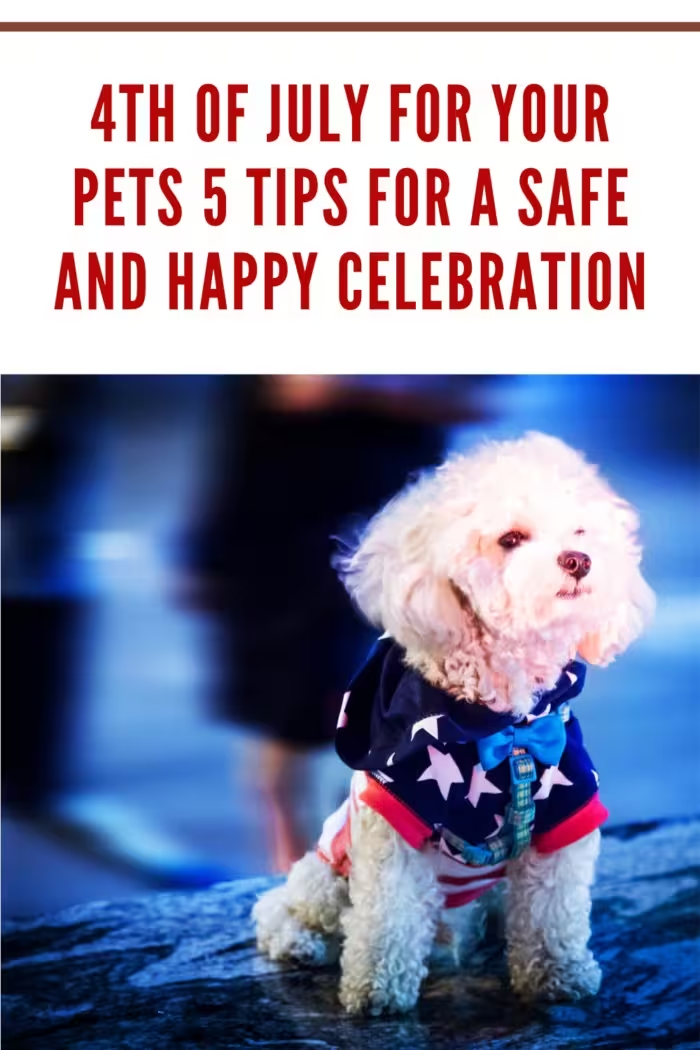
4. Keep Pets Indoors
Not leaving pets outside on the 4th of July is crucial for their well-being and security. The sound of fireworks can be incredibly loud and unsettling for animals, causing them to panic and attempt to escape. Pets left outside may dig under fences, jump over barriers, or squeeze through small openings in an effort to find safety. Keeping them indoors helps minimize their exposure to dangerous situations and ensures their well-being during this celebratory but potentially stressful holiday.
ASPCA (American Society for the Prevention of Cruelty to Animals):
“Fireworks, barbecues, and other Fourth of July traditions can be great fun for people; but all of the festivities can be frightening and even dangerous for animals.”
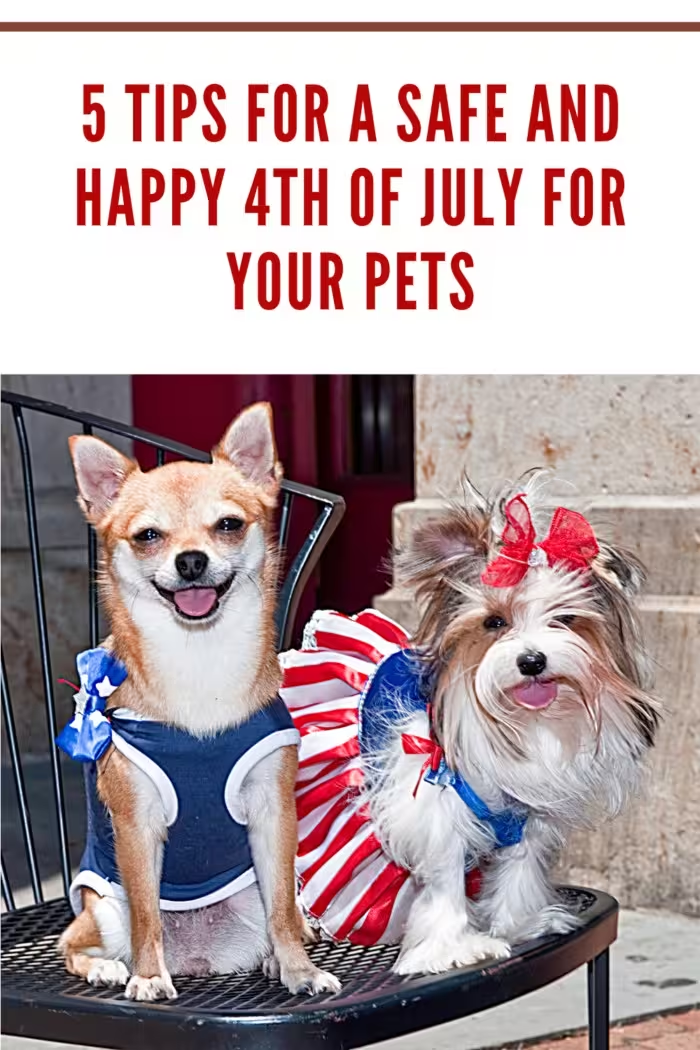
5. Refrain from Scolding a Scared Pet
“Don’t scold a scared pet” is an important safety tip to prioritize the emotional well-being and safety of your pet. Fireworks and loud celebrations can evoke fear and anxiety in pets. Scolding or punishing a scared pet can intensify their fear, making them more distressed and potentially causing them to associate their fear with negative experiences. Instead, focus on positive reinforcement to help your pet feel more secure and calm.
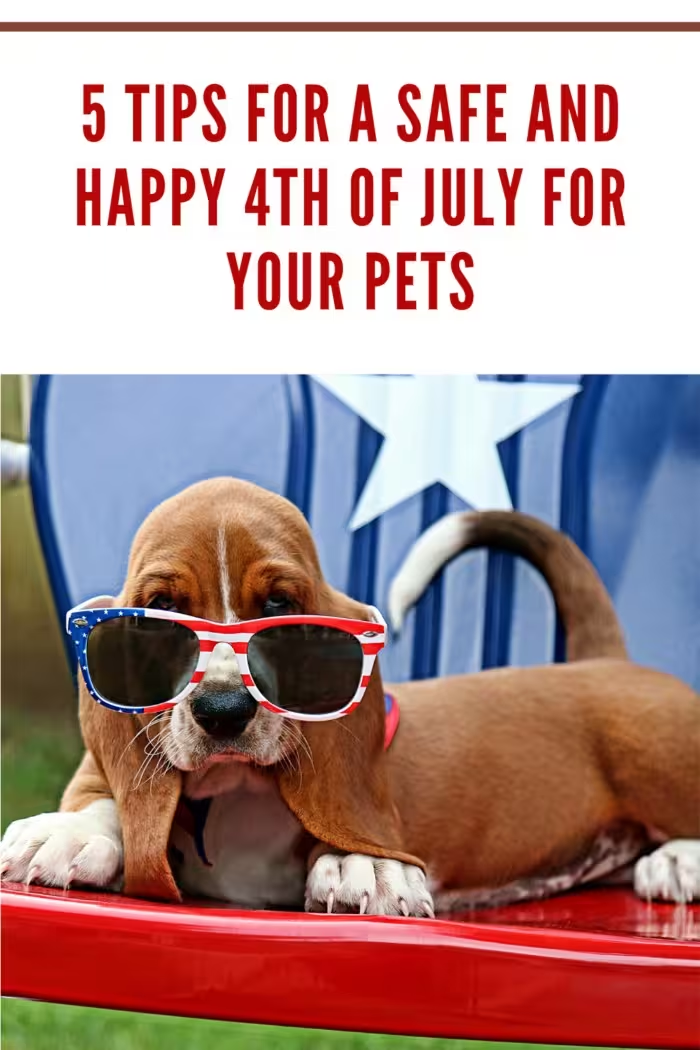
Conclusion
As you prepare to celebrate the 4th of July, it’s essential to prioritize the safety and well-being of your furry friends. By following these safety tips, such as ensuring proper identification, avoiding fireworks, crating your pet, not leaving them outside, and refraining from scolding scared pets, you can create a secure and comforting environment for your pets during this potentially stressful holiday.
What measures have you found effective in calming your pet during fireworks?
Remember, Independence Day is a fun celebration for us, but it’s the worst day for some cats and dogs. The noises from the fireworks and firecrackers terrify them and increase their anxiety. Make sure they are well-protected and feel safe so they can be with your family, happy and healthy for many years to come.
